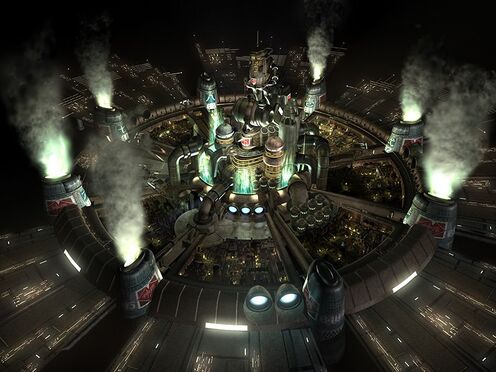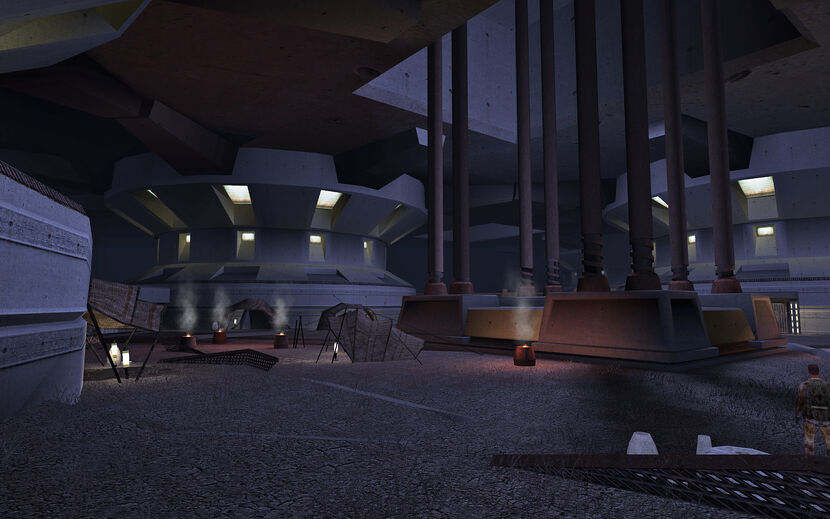That game, of course, is The Elder Scrolls V: Skyrim.

You think I’m exaggerating. It’s actually a well-documented fact, however, that beginning in the early 1990s a small software development company by the name of Bethesda Game Studios—in conjunction with Planned Parenthood and startup funding through DARPA—began development on a series of fantasy role-playing computer games called The Elder Scrolls. T.E.S. is really a double acronym for an ongoing government program called Tactical Eugenics Systems, which basically tests and implements various methods of population reduction, primarily involving mass subjugation of the male sex drive.
In these games the player creates a custom character based on a selection of species/races, skill sets and other considerations. The game then sets the player loose in a huge fantasy environment where they wander around, explore dungeons, perform quests and basically kill things for hours and hours … and hours, to the point where the urge to eat and/or woo members of the opposite sex is nullified by the need to just keep playing more.
(To be fair, I’m sure the actual history of The Elder Scrolls development is quite fascinating. In fact, for the low price of only $149.99 you can buy the limited collectors edition of Skyrim and learn all about it! How can you not afford that?)
Back in the early part of the last decade, for my twenty-second or some odd birthday, my friend bought me a copy of The Elder Scrolls III: Morrowind. I don’t even know how many hours I ended up sinking into that game. My character was a dark elf with a ponytail on the top of his head that I named Nigh Crowder … the elf, not the ponytail. Anyway, awesome, I know.
It seems most of my time was spent running all around this huge island half-heartedly trying to complete missions but usually getting sidetracked by some cave or ancient ruins to explore. I also spent a lot of time trying to find creative new places to stash the heaps of loot I was collecting during my travels (I admit. I’m a virtual hoarder).
Well, that was then. Bethesda released Oblivion, the fourth game in the series, in 2006. I haven’t played it. And now … Skyrim. Unfortunately, I haven’t played this new adventure yet either.
However!
A couple days ago I did watch a little bit of some live streaming footage from the game. For the most part, it looked pretty familiar to Morrowind, but a lot prettier. The game can be played in the first- or third-person perspective. The former, I think, is the preferred playing mode for immersing one’s self into the game’s setting and getting that sense of stepping into the player character’s skin, so to speak. It’s like a first-person shooter, except the shooting of guns gets replaced by the swinging of melee weapons or the casting of magic snowballs and stuff.
While watching this footage, I think it suddenly occurred to me how incredibly violent this game was. Let me clarify that. The ideas represented in the game are violent—the act of going around and cutting people and creatures down with swords, scorching them in flames. That’s violent stuff.
If you’re reading this and saying something aloud like, “Well, duh,” I agree with you. Almost all of the games I play are violent! But as someone who has played games for just about the entirety of my life, I think I can speak with some authority that most of us who do play these games tend to be pretty desensitized. We aren’t actually going around and slaughtering everything. We’re just … pretending. Now, I don’t want to go too far in this direction, because I think to do so properly would require greater eloquence than I feel capable of expressing at the moment.
I will say that when I started playing video games as a young child, although we may have been participating in roughly the same ideas of violence in those games, the graphical capabilities of the available technology were woefully inadequate for achieving what we now refer to in some games as photorealism. Sure, the premise of the original Contra may largely have involved the idea of shooting people to death, but it sure didn’t look like actually shooting people to death.
Although these graphical capabilities gradually improved over time with new generations of hardware, each step in getting to where we are today has been just that … one step at a time. It’s made the evolution toward photorealism somewhat less shocking, to the point that we can look at a game like Call of Duty and not necessarily be all that disturbed by the fact that its graphical representation of shooting people is starting to look quite a bit more like actually shooting people. As a side note, it’s important to emphasize that all games are not going in the direction of photorealism. Far from it.
But getting back to Skyrim … I’m sorry, what was I talking about? Oh yeah. I was watching the live footage and the player character in the game was dual wielding two maces. They looked like black, spiky maracas of death. It appeared as if the player had just stumbled upon some kind of bandit camp, because he suddenly found himself being attacked by a bunch of elves or other humanoid creatures. In retrospect, I don’t think the video quality of the live feed was very good. Nevertheless, when the player character first started swinging one of those burly maces at one of the female enemies, I admit I was slightly taken aback. As relatively realistic as everything appeared, it seemed only logical there was about to be a pulpy, bloody mess of an elf woman’s face on the screen. I mean, these were some serious-looking maces!

That didn’t quite happen. The elf woman did get banged around a bit and fell over dead. I’m sure there were the obligatory spurts of digital blood but—as far as I could see—no bits of shredded flesh on the player’s mace, no mangled, unrecognizable face lying in the snow. If we want to get into a discussion about the mathematical systems behind the proverbial curtain of these animations—I’m talking about things like hit points and computerized dice rolls—then this probably makes a lot more sense. Still, more than it typically happens, that footage triggered a mental connection between the game’s abstract representation of violence and real violence. It made me rethink what I had been doing all those hours in the previous Elder Scrolls game, and by extension other games in general. I don’t want to make it sound like I’ve never pondered and considered the violence in video games. Believe me, I have. But I don’t think I’ve thought too much about the idea of photorealistic violence.
Imagine if the next generation of game engines achieved the ability to render the level of gory detail my mind was anticipating. Would I want to play a game where I’m watching the realistic-looking effect of a medieval mace bludgeoning the face of another human being? From the first-person, no less? I'm sure there are plenty of people who would probably answer with an unhesitating yes!
Video games are by no means the first expressive medium to face these questions of represented violence and how far is too far. I think film provides a good point of comparison.
Have you ever noticed how most films, even modern violent films, often do not actually show things like blades penetrating human flesh? If they do, then the film sequence is usually edited in such a way that there are only quick flashes of it, or maybe just the immediate after effects. It was probably Psycho that made this technique famous. But think of just about any modern epic like Gladiator or Braveheart. This type of editing makes the violence a little more palatable. It softens or at least scrambles the mental impact.
I can think of a few counter examples, film scenes in which the camera does not cut away. These are usually the images that haunt me well after the film—not in a good way. A scene of the killer in David Fincher’s Zodiac stabbing a random victim at a roadside park comes to mind.
Has anyone ever seen the 1970 film The Honeymoon Killers? In that film there is a famous scene where the titular couple rubs out one of their old lady victims. The overweight nurse Martha, pretending to be her ex-con husband’s sister, comes up behind the poor frightened Janet and knocks her over the head with a hammer. Twice. There’s no exaggerated sound effect. It isn’t shot in close-up or any sort of deliberate framing. It isn’t stylized. And it isn’t funny—quite the opposite. Just a poor frightened woman getting pounded on the skull with a regular old hammer.

Most video games don’t have the easy option of being able to just cut away from the violence. The player is providing the input, and the game responds with a digital swinging limb or a firing weapon. Even when violent games have been at their bloodiest, still what has saved them from being taken very seriously by most gamers is probably some combination of repetition and limited graphical capability.
I would guess that, as with film, the video game industry will continue to find its own methods of sterilizing and softening the implied violence. The interesting thing to consider, however, is the idea that, more and more, this might be a deliberate choice on the part of game developers as opposed to a technological necessity.
I suppose I can’t end this diatribe without mentioning one other game in particular, and that is 2007’s BioShock. If you haven’t played the game and don’t want it spoiled, I’ll try not to actually spoil anything … but you might just as well want to avoid reading this further regardless.
As far as bludgeoning goes, this game has a pretty intense moment of it (if you’ve played the game already you can refer to this YouTube video for a quick refresher). It involves an otherwise harmless sporting instrument as a killing device, and maybe it was my shallowly buried memory of this particular moment in this particular game that caused me to expect a more brutal outcome from the fighting I saw in Skyrim. It’s interesting to notice, however, how this scene plays out without character input, basically as a first-person cutscene. As with the hammer scene from The Honeymoon Killers, this moment can be a bit unsettling to watch. There is not just blood but bruising. The victim responds in dramatic agony.
For a game where pretty much all the player does—besides playing a Pipe Dreams clone of a hacking minigame—is run around killing people (sometimes with a wrench, no less), it’s interesting the developers decided and managed to imbue this one isolated killing with so much emotional weight. I have no idea what the authorial intentions were behind this moment or the game itself, for that matter. To be perfectly honest, I’m not sure I really get BioShock. But I see the potential of using photorealistic violence as a real gut check for the player. Sadly, I also see the possibility that this also will be just another small step in our continually devolving progress toward total desensitization.
But enough rambling, back to more not playing Skyrim.






